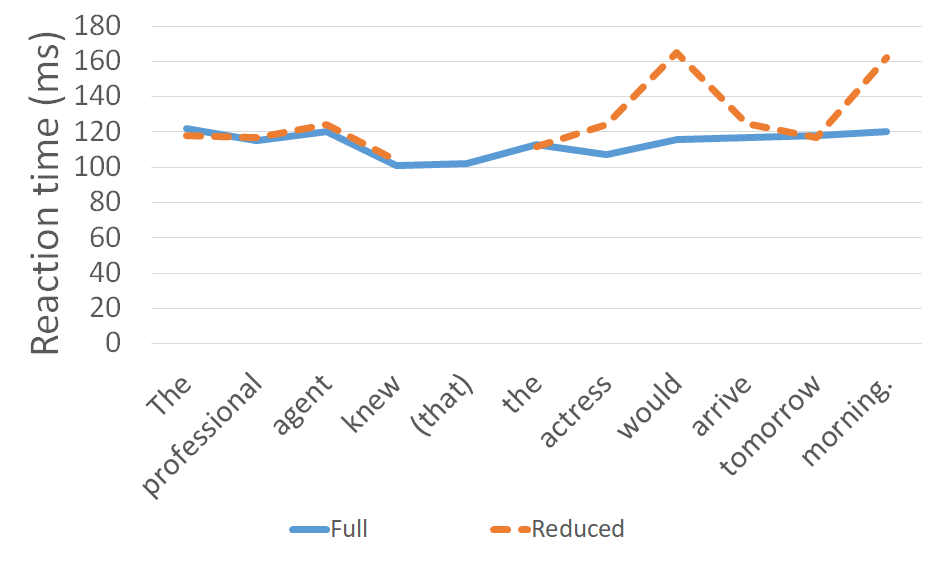The examples we discussed so far have been in English, and with a certain kind of sentence structure (sentences with
reduced relative clauses). But garden path effects can happen in many other sentence structures, and can happen in
any language. Think about this Chinese sentence (If you don't know Chinese, feel free to work on this with a
classmate who does and can help discuss this with you):
Is that a complete and grammatical sentence?
What about this one:
In the second sentence, who did "I" (我) see?
In fact, in that sentence, 我 did not see the student; 我 saw the teacher (who all the students hate)!
This is another example of a sentence that could have a garden path. When the person first reads
我見到了那個學生, they might think that the sentence is over, and
the person "我" saw was the student. But when they read "都", they will be confused (if the sentence was
already over, why is there another word here?) and they will have to reinterpret the sentence (they will have to
realize that "我" did not actually see the student; "我" saw something else or someone else).
Can you think of any other sentence (in a language other than English, or in English but with a different sentence
structure than the reduced relative clause examples we've seen) that might trigger a garden path? Or can you find one
(e.g. in news articles or something)?
Techniques based on measuring reaction time, such as self-paced reading and priming, are powerful because they give us a way to examine
what is going on in someone's mind unconsciously without having to ask them directly what they think. Sometimes they might
not even know they are thinking something, but reaction time measures can reveal it.
For example, imagine you read (or hear) a sentence Yesterday I talked to the cafeteria worker. This sentence probably looks
normal. However, in reality, we usually can't read a whole sentence in one glance, or hear a whole sentence in one instant; in
reality, we read or hear part of a sentence before we read or hear all of it. So in this case, for example, there must be some
instant, before you've finished reading or hearing the entire sentence, when what you've read or heard so far is: Yesterday I
talked to the cafeteria...
That sentence should seem weird, since you know people don't normally talk to cafeterias. Thus, there might be an instant where you are
surprised and confused while reading this sentence. Later, you see ...worker and realize that the sentence is normal (it's
about talking to a cafeteria worker, not about talking to a cafeteria). You probably never even notice that you have a moment of
confusion when reading the sentence (when you read Yesterday I talked to the cafeteria worker the first time, in the
previous paragraph, you probably didn't notice that it was weird). But experiments using self-paced reading and eye-tracking
(another experimental method, discussed in the Eye-tracking module) have shown that people do indeed slow down a bit when they read
cafeteria, compared to other words that refer to things which people do normally talk to.
The above is just one example of how reaction times can be useful to reveal things about language that are below a person's level of
conscious awareness. For a few other examples, see, e.g., this brief Facebook discussion,
and the Implicit Association Task (under "Project Implicit Social Attitudes").
Can you think of any ways that reaction time might be a useful technique for your
own research?
